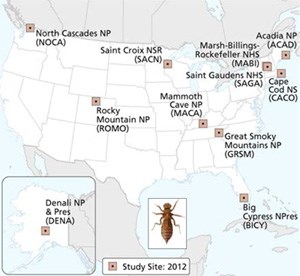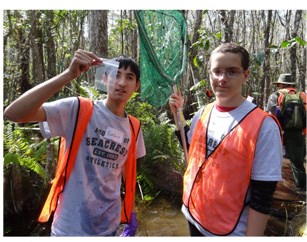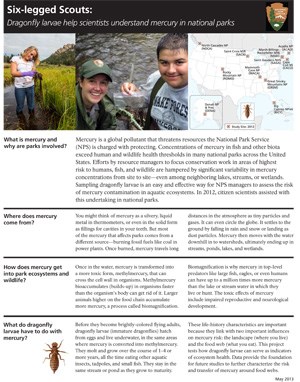
MERCURY When Mercury is deposited or flows into wetlands, it is converted by bacteria into a toxin. Over time, this toxin bioaccumulates in animals, reaching potentially deadly levels in top predators. 
STUDY 
At Big Cypress National Preserve, 8th grade students from Seacrest County Day School searched the swamp for samples. During the winter of 2012, 27 dragonfly nymphs from three sites within Big Cypress were collected and sent to the University of Maine for analysis. On average, Big Cypress dragonfly nymphs did contain elevated levels of mercury compared to other parks. Mercury concentrations were found to vary from one National Park Service unit to another, with eastern units generally containing higher mercury levels than western units. Data from some units revealed high variability within parks as well. Seacrest students continued the study, returning for its second year. They collected 54 dragonfly nymphs from four sites across Big Cypress National Preserve during the winter of 2013. Results from 2014 samples are expected in the spring. 
For a downloadable PDF of the summary of results, click here. For an informative YouTube video about this fascinating project, please click here. For teachers interested in incorporating mercury into their curriculums, please click here for resources. |
Last updated: April 14, 2015
